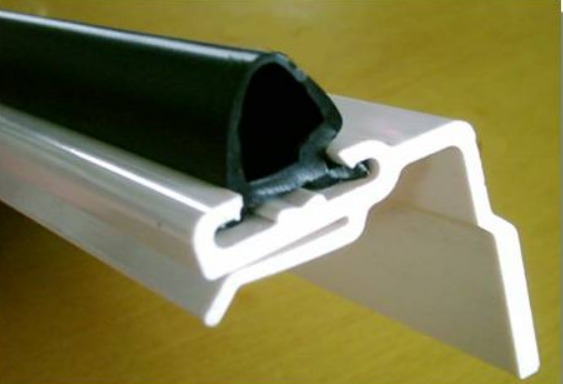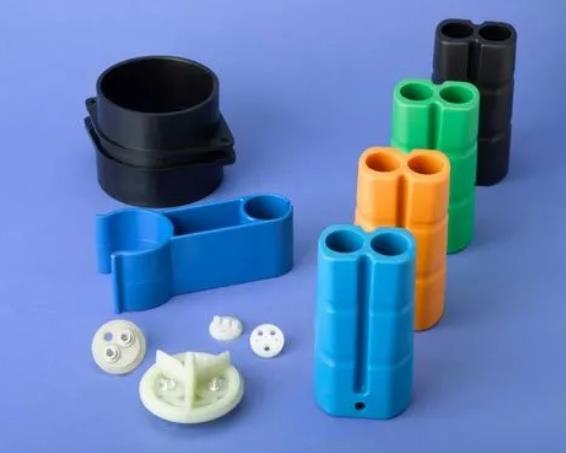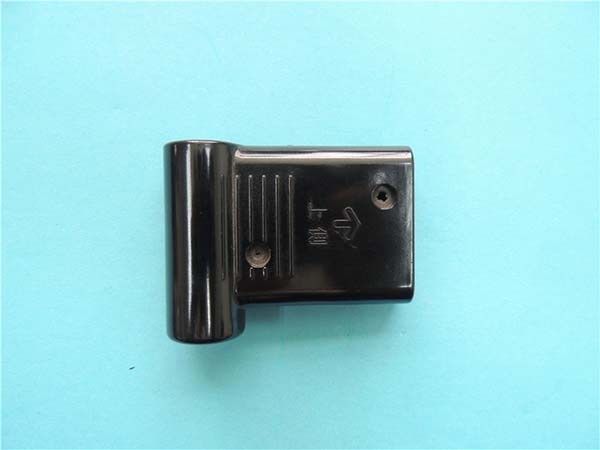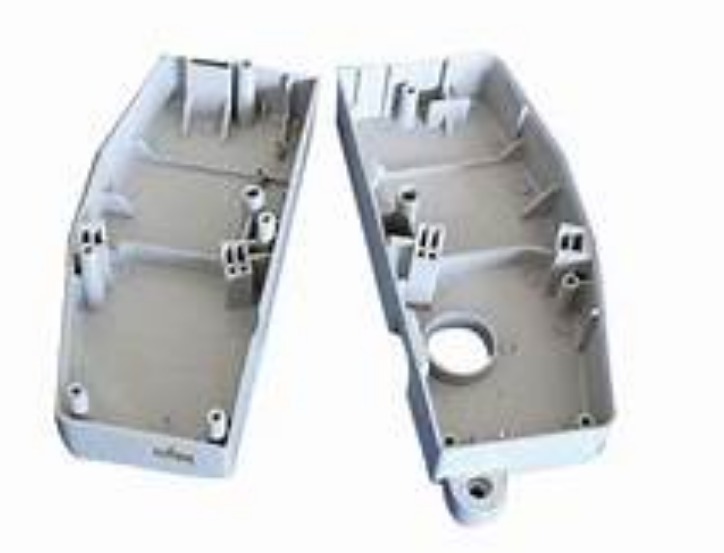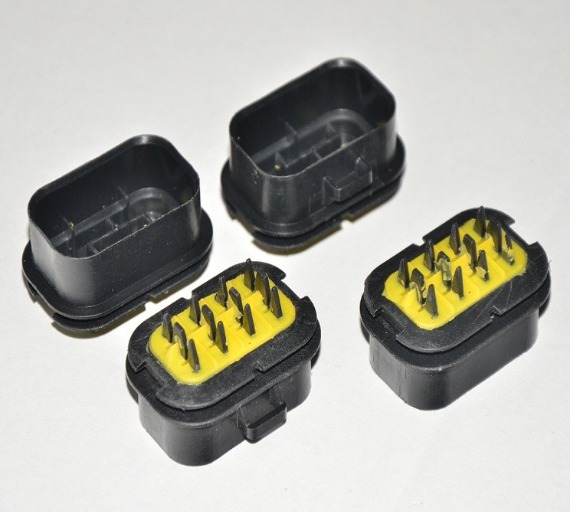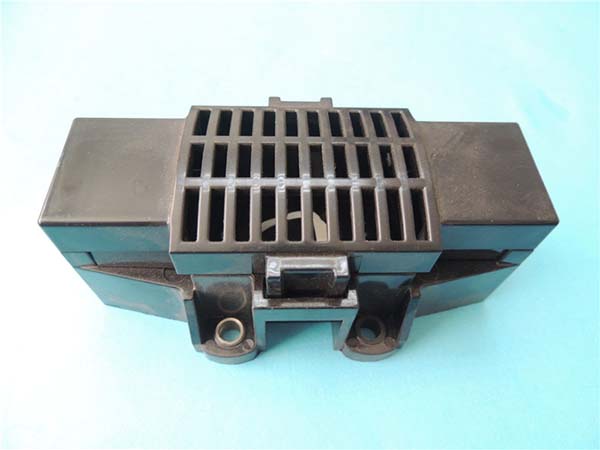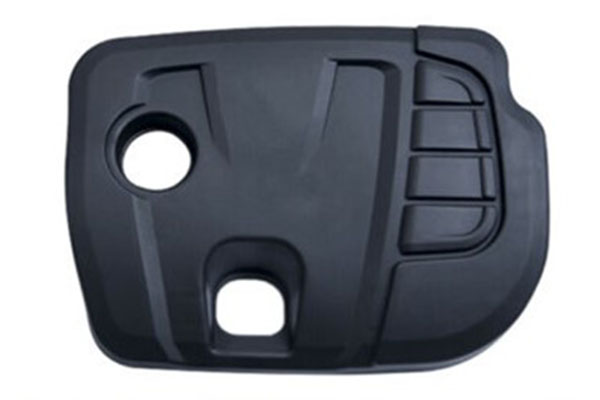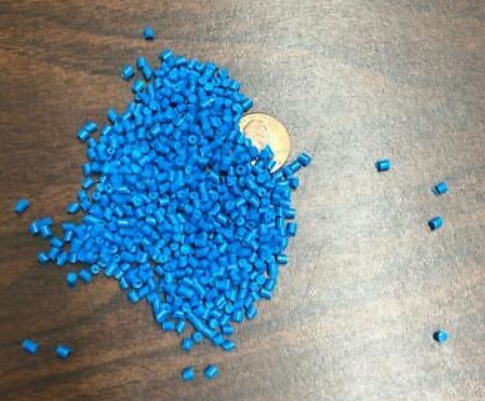Introduction
What is Multi - Color Injection Molding?
Multi - Color Injection Molding is an advanced manufacturing process that allows the creation of plastic parts with multiple colors in a single operation. In a traditional injection molding process, a single type of plastic material is melted and injected into a mold cavity to form a part. However, multi - color injection molding takes it a step further.
The process begins with multiple hoppers, each containing a different color of plastic pellets. These pellets are then heated separately until they reach a molten state. Once melted, the molten plastics are precisely injected into a specially designed mold cavity in a sequential or overlapping manner. For example, in a two - color injection molding, the first color plastic is injected to form the base or a certain part of the product. Then, without removing the partially formed part from the mold, the second - color plastic is injected, either on top of the first one, around it, or in a way that creates a distinct pattern or design.
The mold used in multi - color injection molding is more complex than a standard mold. It often has additional channels and gates to control the flow of each color of plastic. This complexity ensures that the different colors are accurately placed within the mold cavity to create the desired multi - colored effect. As the molten plastics cool and solidify inside the mold, they bond together to form a single, multi - colored plastic part. This process can be used to create products with a wide variety of color combinations, from simple two - tone designs to complex, multi - hued patterns.
Components of a Multi - Color Injection Molding Machine
The Core Parts
- Hoppers: The hoppers are the starting point of the process. They are containers that hold the plastic pellets. In a multi - color injection molding machine, there are multiple hoppers, each dedicated to a different color of plastic. For example, a two - color injection molding machine will have at least two hoppers. The hoppers are designed to feed the plastic pellets smoothly into the heating and injection system. They usually have a gravity - fed mechanism or can be equipped with augers to ensure a consistent flow of pellets.
- Screw: The screw is a crucial component located inside the barrel. Its main function is to transport, compress, and melt the plastic pellets. As the screw rotates, it conveys the plastic pellets from the hopper towards the nozzle. During this movement, the screw compresses the pellets, increasing the pressure and friction, which in turn generates heat to melt the plastic. The design of the screw, including its pitch (the distance between consecutive threads) and the length - to - diameter ratio, affects the melting efficiency and the quality of the molten plastic. For instance, a screw with a larger pitch can transport the plastic more quickly, while a longer screw allows for better melting and mixing.
- Nozzle: The nozzle is the end - point of the injection system. It is a small, precisely engineered opening through which the molten plastic is injected into the mold. The nozzle needs to be able to control the flow rate and pressure of the plastic accurately. Some nozzles are equipped with shut - off valves to prevent the back - flow of molten plastic when the injection process is paused. The size and shape of the nozzle are also important factors. A smaller nozzle may be used for more precise injection, especially when creating small, detailed multi - colored parts, while a larger nozzle can handle higher - volume injections for bigger products.
- Mold: The mold is the most complex and critical part for creating the multi - colored product. It consists of two or more parts that come together to form the cavity where the plastic takes shape. In multi - color injection molding, the mold has additional features to accommodate the different colors. It may have multiple gates (the openings through which the plastic enters the cavity) and channels to direct each color of plastic to the desired location within the cavity. For example, in a mold for a two - color toy figure, there will be one gate for the first color to form the body and another gate for the second color to create the details like eyes or clothing. The mold must be made of high - quality materials, such as hardened steel, to withstand the high pressures and temperatures during the injection process.
Specialized Components for Multi - Color Functionality
- Multiple Barrels: To achieve multi - color injection, the machine is equipped with multiple barrels, each corresponding to a different color. Each barrel has its own heating and melting system. For example, a three - color injection molding machine will have three barrels. The barrels heat the plastic pellets from the respective hoppers to a molten state. This allows for the independent control of the melting process for each color, ensuring that the plastics are at the optimal temperature for injection. The barrels are usually arranged in parallel or in a configuration that allows for easy integration with the rest of the injection system.
- Specialized Injection System: The injection system in a multi - color machine is more complex than in a single - color machine. It needs to coordinate the injection of different - colored plastics precisely. This often involves a series of valves and pistons. For instance, a shuttle - type injection system uses a movable piston or shuttle to direct the molten plastic from each barrel to the mold. When the first - color plastic is ready, the shuttle directs it to the mold through the appropriate gate. After the first - color injection, the shuttle moves to direct the second - color plastic to the mold, either on top of or adjacent to the first - color plastic, depending on the design. Some advanced injection systems can also control the timing and pressure of each injection with high precision, enabling the creation of complex color patterns and gradients.
Working Principles of Multi - Color Injection Molding
Step - by - Step Process
- Plastic Material Preparation:
- Begin by filling multiple hoppers with different - colored plastic pellets. Each hopper is dedicated to a specific color. For example, if creating a two - color product, one hopper will hold red pellets and the other blue pellets. The quality and purity of the plastic pellets are crucial as any impurities can affect the final color and quality of the product.
- Heating and Melting:
- The plastic pellets from each hopper enter separate barrels. Inside the barrels, heating elements raise the temperature of the plastic pellets. For instance, for common plastics like ABS (Acrylonitrile Butadiene Styrene), the temperature needs to be raised to around 200 - 250°C to reach a molten state. As the screw rotates within the barrel, it compresses and shears the plastic, further aiding in the melting process and ensuring a homogeneous molten plastic mass.
- Multi - Color Injection:
- Once the plastics are molten, the injection process begins. In a sequential injection system, the first - color plastic is injected into the mold cavity. The injection pressure and speed are carefully controlled. For example, if the product has a large base area in one color, a relatively high injection speed may be used initially to quickly fill the cavity for that part. After the first - color injection, the injection system switches to the second - color barrel. The second - color plastic is then injected, either on top of the first - color plastic or in a way that creates a distinct pattern. In some cases, the two colors may overlap slightly to create a blending effect. This is often seen in products like multi - colored toothbrushes, where the handle has a gradient color transition.
- Cooling and Solidification:
- After the multi - colored plastics are injected, the mold is cooled. This can be achieved through water - cooled channels within the mold. The cooling rate is important as it affects the quality of the product. A too - fast cooling rate may cause internal stresses in the plastic, leading to warping or cracking, while a too - slow cooling rate increases the production cycle time. For most plastics, the cooling time can range from 10 - 60 seconds, depending on the thickness and size of the product. As the plastic cools, it solidifies, taking on the shape of the mold cavity and bonding the different colors together.
- Mold Opening and Part Ejection:
- Once the plastic is fully solidified, the mold opens. Ejection pins inside the mold push the finished multi - colored plastic part out of the mold cavity. The part is then collected, and any excess material, such as flash (thin, unwanted plastic edges), is removed. This may involve manual trimming or the use of automated trimming equipment.
[Here, you can insert a simple flow - chart diagram showing the above five - step process, with arrows indicating the sequence and different boxes for each step, labeled "Plastic Material Preparation", "Heating and Melting", "Multi - Color Injection", "Cooling and Solidification", "Mold Opening and Part Ejection"]
Key Technical Points in the Process
- Injection Pressure:
- The injection pressure plays a vital role in ensuring that the molten plastic fills the mold cavity completely. If the injection pressure is too low, the plastic may not reach all parts of the cavity, resulting in incomplete products. For example, in a complex multi - colored mold with small and intricate details, a higher injection pressure may be required to ensure that the plastic flows into every corner. On the other hand, if the pressure is too high, it can cause the plastic to flash (leak out of the mold seams), damage the mold, or create excessive internal stresses in the product, leading to warping or cracking. The optimal injection pressure depends on factors such as the type of plastic, the complexity of the mold, and the size of the product. For a small, simple two - color plastic toy, an injection pressure of around 50 - 80 MPa might be sufficient, while for a large, complex automotive interior component with multiple colors, the pressure could be in the range of 100 - 150 MPa.
- Temperature Control:
- Precise temperature control is essential throughout the process. The temperature of the plastic in the barrels must be carefully regulated to ensure proper melting. Different plastics have different melting points. For example, polypropylene (PP) has a melting point of around 160 - 170°C, while polyethylene terephthalate (PET) melts at approximately 250 - 260°C. If the temperature is too low, the plastic may not melt completely, causing flow problems during injection. If it is too high, the plastic can degrade, changing its color and mechanical properties. During the cooling phase, the mold temperature also needs to be controlled. A uniform mold temperature helps in even cooling of the multi - colored plastic, reducing the risk of warping and ensuring consistent color quality.
- Injection Sequence:
- The order in which the different - colored plastics are injected is crucial for achieving the desired design. A well - planned injection sequence can create complex and aesthetically pleasing patterns. For example, in a product with a multi - colored logo on a base color, the base - color plastic is injected first to form the main body, and then the colored plastics for the logo are injected in a precise sequence to create the correct shape and color combination. Any deviation from the planned injection sequence can result in a misaligned or incorrect color pattern. In some advanced multi - color injection processes, the injection sequence can be adjusted in real - time based on sensors that monitor the flow and filling of the plastic in the mold.
Choosing the Right Multi - Color Injection Molding Machine
Factors to Consider
- Injection Volume: Calculate the total volume of plastic needed for your products, including the part itself and any runners or gates. The injection volume of the machine should be sufficient to meet this requirement. For example, if you are producing a multi - colored plastic toy that weighs 50 grams per unit and you plan to produce 100 units per hour, you need to ensure the machine can handle the injection volume for this production rate. As a general rule, the injection volume of the machine should be at least 1.3 - 1.5 times the volume of the largest part you intend to produce to ensure stable production and avoid issues like short - shots.
- Clamping Force: When the molten plastic is injected into the mold, it exerts pressure on the mold cavity. The clamping force of the injection molding machine must be strong enough to keep the mold closed during this process. To determine the required clamping force, you need to calculate the projected area of the product in the mold (the area that the plastic presses against in the opening and closing direction of the mold) and multiply it by the estimated pressure inside the mold cavity. Different plastics and mold designs may require different clamping forces. For instance, for a small, simple multi - colored plastic part with a projected area of 10 square centimeters and an estimated mold cavity pressure of 350 kg/cm², the required clamping force would be 10 cm² × 350 kg/cm² = 3500 kg. In general, the machine's clamping force should be at least 1.1 - 1.2 times the calculated value to provide a safety margin.
- Machine Brand: Well - known brands often offer better quality, reliability, and after - sales service. Brands like 海天(Haitian), 力劲(L.K.M.), and 伊之密(Yizumi) have established a good reputation in the industry. Haitian, for example, is known for its wide range of machine models, high - quality components, and extensive global service network. A machine from a reputable brand may have a higher initial cost but can save you money in the long run through reduced maintenance and downtime.
- Price: Your budget is an important factor. While it's tempting to go for the cheapest option, remember that a lower - priced machine may come with compromises in terms of quality, performance, and durability. Compare the prices of different models and brands, and consider the long - term cost - effectiveness. For example, a more expensive machine with better energy - efficiency and longer lifespan may be a better investment than a cheaper one that requires frequent repairs and consumes more energy. You can also look for promotions, discounts, or refurbished machines to get a better deal without sacrificing too much on quality.
When choosing a machine, you need to balance these factors according to your specific production needs. For example, if you are a small - scale manufacturer with a limited budget and producing relatively simple multi - colored products, you may prioritize price and still be able to find a suitable machine with sufficient injection volume and clamping force from a mid - range brand. On the other hand, a large - scale production facility with high - volume and high - precision requirements may focus more on brand reputation and advanced features, even if it means a higher investment.
Comparing Different Models and Brands
Here is a comparison table of some common multi - color injection molding machine models and brands:
| Brand | Model | Injection Volume (cm³) | Clamping Force (kN) | Features | Suitable for |
| Haitian | MA2000II/700 | 700 | 2000 | High - speed injection, precise temperature control | Medium - to - large - sized multi - colored plastic products, such as automotive interior parts |
| L.K.M. | PT320 | 1094 | 3200 | Strong clamping system, energy - saving design | Large - scale production of multi - colored industrial products and consumer goods |
| Yizumi | UN260A2 | 749.3 | 2600 | Advanced control system, high - precision injection | Products with complex multi - colored designs, like high - end consumer electronics casings |
This table provides a basic overview. When making a decision, you should also consider other factors such as the specific requirements of your products, the cost of the machine, and the availability of spare parts and after - sales service in your area.
Yigu Technology's Perspective
As a non - standard plastic metal products custom Supplier, Yigu Technology highly values the role of multi - color injection molding machines in modern manufacturing. With years of experience in meeting diverse customer demands, we understand that these machines are crucial for creating unique and customized products.
Multi - color injection molding allows us to bring our customers' creative designs to life. Whether it's a complex multi - colored logo on a plastic product or a product with a gradient color effect, the precision and flexibility of multi - color injection molding machines enable us to achieve high - quality results. We have found that the ability to control injection pressure, temperature, and sequence accurately is key to producing parts with consistent color quality and structural integrity.
Moreover, when choosing multi - color injection molding machines, we consider factors such as the machine's compatibility with different plastic materials and its ease of integration into our existing production lines. This ensures efficient production and helps us meet tight delivery schedules. In our experience, investing in high - quality multi - color injection molding machines is a long - term strategy that pays off in terms of product quality, customer satisfaction, and business growth.
